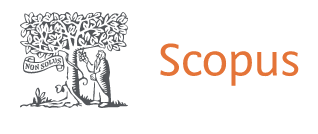The influence of PWIM and PWIM-MID on descriptive writing skills in terms of writing self-efficacy
Abstract
The aim of this research is to obtain a comprehensive picture of the influence of the Picture Word Inductive Model (PWIM) and Picture Word Inductive Model Based on Multiliteracy, Integrative and Differentiation (PWIM-MID) on the ability to write descriptive text in terms of students' writing self-efficacy. The sample in this research was class III students at Setiabudi 01 primary school, Setiabudi subdistrict, South Jakarta City. The method used is an experiment with a 2 x 2 factorial design. The research results are as follows: 1) Learning to write descriptive text using the PWIM and PWIM-MID models is included in the quite effective category. 2) Based on the Two Ways Anova test, a sig value of 0.045 ˂ 0.05 was obtained, meaning that there was a difference in the increase in the ability to write descriptive text between students with the PWIM and PWIM-MID models. 3) Based on the Test of Between Subject Effect, a sig value of 0.424 ˃ 0.05 was obtained, students who have low writing self-efficacy do not necessarily have the ability to write low descriptive text and vice versa, students who have high writing self-efficacy do not necessarily have the ability to write high descriptive text. 4) Based on the calculation of the interaction effect, a sig value of 0.026 ˂ 0.05 is obtained, meaning that there is an interaction effect between the writing model and writing self-efficacy on increasing students' ability to write descriptive text. Based on the results obtained, it can be concluded that learning using the PWIM and PWIM-MID models is quite effective in implementing students who have different writing self-efficacy (low writing self-efficacy and high writing self-efficacy).
Keywords
Full Text:
Fulltext PDFReferences
Abidin, Y., Mulyati, T., & Yunansah, H. (2017a). Developing literacy learning model based on multiliteracy, integrated, and differentiated concept at primary school. Jurnal Cakrawala Pendidikan, 36(2), 156–166. https://doi.org/10.21831/cp.v36i2.13283
Abidin, Y., Mulyati, T., & Yunansah, H. (2017b). Pembelajaran literasi strategi meningkatkan kemampuan literasi matematika, sains, membaca, dan menulis. Bumi Aksara.
Alhabahba, M. M., Pandian, A., & Mahfoodh, O. H. A. (2016). The effect of integrated instructions on reading comprehension, motivation, and cognitive variables. Issues in Educational Research, 26(3), 387–406.
Apriliana, A. C. (2016). Picture Word Inductive Model (PWIM) dalam pembelajaran membaca dan menulis permulaan di sekolah dasar. Pedagogik : Jurnal Pendidikan Guru Sekolah Dasar, 4(1), 1–12. https://doi.org/10.33558/pedagogik.v4i1.1264
Apriliana, A. C., Hartati, T., & Sunendar, D. (2022). Developing literacy learning through picture word inductive model assisted by classpoint application for students in early grades of elementary school. Proceeding The 10th Pedagogy International Conference Productive Pedagogy Based on Inclusive Education, Multiliteracy & TPACK, 74–79.
Apriliana, A., Hartati, T., & Sunendar, D. (2024). Pengaruh Picture Word Inductive Model berbantuan classpoint dan wordwall terhadap kemampuan membaca pemahaman ditinjau dari minat baca siswa. Jurnal Elementaria Edukasia, 7(1), 2431–2448. https://doi.org/10.31949/jee.v7i1.8916
Broce, I. J., Bernal, B., Altman, N., Bradley, C., Baez, N., Cabrera, L., Hernandez, G., De Feria, A., & Dick, A. S. (2019). Fiber pathways supporting early literacy development in 5–8-year-old children. Brain and Cognition, 134(December 2018), 80–89. https://doi.org/10.1016/j.bandc.2018.12.004
Canagarajah, S. (2024). Decolonizing academic writing pedagogies for multilingual students. TESOL Quarterly, 58(1), 280–306. https://doi.org/10.1002/tesq.3231
Daulay, E. (2020). Picture words inductive model for young learner in improving English vocabulary for Indonesian students at SD Swasta Pelangi Medan. VISION, 16(1), 24–39. https://doi.org/10.30829/vis.v16i1.709
Fälth, L., & Selenius, H. (2024). Primary school teachers’ use and perception of digital technology in early reading and writing education in inclusive settings. Disability and Rehabilitation: Assistive Technology, 19(3), 790–799. https://doi.org/10.1080/17483107.2022.2125089
Fernández-Corbacho, A., Cores-Bilbao, E., & Flor-Arasil, P. (2024). Ethnocultural empathy development of future language teachers through digital multiliteracy resources for low-literacy adult migrants. Frontiers in Psychology, 15(June). https://doi.org/10.3389/fpsyg.2024.1398457
Firdaus, M., & Yukamana, H. (2024). The implementation of discovery learning method to improve the seventh grade students’ reading comprehension on descriptive text: a classroom action research. PPSDP International Journal of Education, 3(1), 112–121. https://doi.org/10.59175/pijed.v3i1.196
Gall, M., Gall, J. P., & Borg, W. R. (2014). Applying educational research: How to read, do, and use research to solve problems of practice. Pearson Education, Inc.
Hammack, R., Yeter, I., Pavlovich, C., & Boz, T. (2024). Pre-service elementary teachers’ science and engineering teaching self-efficacy and outcome expectancy: exploring the impacts of efficacy source experiences through varying course modalities. International Journal of STEM Education, 11(1). https://doi.org/10.1186/s40594-024-00464-9
Hartati, T., & Heryanto, D. (2019). Pendidikan Bahasa dan Sastra Indonesia berbasis TPACK dan multiliterasi di sekolah dasar. UPI Press.
Hulu, P. G. D., Herman, H., Sinaga, Y. K., Syathroh, I. L., Sari, H. N., Saputra, N., & Purba, R. (2023). Teaching English to local vernacular students in Indonesia: Effects of using Picture Word Inductive Model (PWIM) on writing skills. International Society for the Study of Vernacular Settlements, 10(9), 187–197. https://doi.org/10.61275/ISVSej-2023-10-09-13
Ingram, E., Hill, T. W., Harshbarger, D., & Keshwani, J. (2024). Improving elementary pre-service teachers’ science teaching self-efficacy through garden-based technology integration. Education Sciences, 14(1), 65. https://doi.org/10.3390/educsci14010065
Joyce, B. R., Weil, M., & Calhoun, E. (2014). Models of teaching. Pearson Education Inc.
Kalantzis, M., & Cope, B. (2023). Multiliteracies: Life of an Idea. International Journal of Literacies, 30(2), 17–89. https://doi.org/10.18848/2327-0136/CGP/v30i02/17-89
Kemendikbud. (2017). Pedoman penilaian dan evaluasi gerakan literasi nasional. 1–66.
Kim, H. S., Ahn, S. H., & Kim, C. M. (2019). A New ICT literacy test for elementary and middle school students in Republic of Korea. The Asia-Pacific Education Researcher, 28(3), 203–212. https://doi.org/10.1007/s40299-018-0428-8
Kingsford-Smith, A. A., Alonzo, D., Beswick, K., Loughland, T., & Roberts, P. (2024). Perceived autonomy support as a predictor of rural students’ academic buoyancy and academic self-efficacy. Teaching and Teacher Education, 142. https://doi.org/10.1016/j.tate.2024.104516
Kulju, P., Kupiainen, R., Wiseman, A. M., Jyrkiäinen, A., Koskinen-Sinisalo, K.-L., & Mäkinen, M. (2018). A review of multiliteracies pedagogy in primary classrooms. Language and Literacy, 20(2), 80–101. https://doi.org/10.20360/langandlit29333
Lumbangaol, A. W. D., Silalahi, D. E., & Herman, H. (2024). Implementing the use of group discussion in writing descriptive text: A case on teaching method. Journal of Education, Linguistics, Literature, and Art, 2(1). https://doi.org/10.62568/ella.v2i1.124
Maesaroh, S., & Muzayyin, M. (2022). The effect of critical multiliteracy learning model on students’ reading comprehension. International Journal of Educational Qualitative Quantitative Research, 1(1), 28–33. https://doi.org/10.58418/ijeqqr.v1i1.3
Morocco, C. C., Aguilar, C. M., & Bershad, C. J. (2010). Supported literacy for adolescents: Transforming teaching and content learning for the 21st century. John Wiley & Sons.
Novia, F. (2015). Promoting Picture Word Inductive Model (PWIM) to Develop Students’ Writing Skill. PREMISE JOURNAL:ISSN Online: 2442-482x, ISSN Printed: 2089-3345, 4(1). https://doi.org/10.24127/pj.v4i1.283
Oakley, G., Wildy, H., & Berman, Y. (2020). Multimodal digital text creation using tablets and open-ended creative apps to improve the literacy learning of children in early childhood classrooms. Journal of Early Childhood Literacy, 20(4), 655–679. https://doi.org/10.1177/1468798418779171
Oktafiani, D., & Husnussalam, H. (2021). Improving students’ writing skills in descriptive text using Picture Word Inductive Model (PWIM) strategy. PROJECT (Professional Journal of English Education), 4(3), 420. https://doi.org/10.22460/project.v4i3.p420-425
Puspitasari, S., Eliza, E., Syahrul, S., & Dewi, M. P. (2024). The effect of using Picture Word Inductive Model (PWIM) strategy toward vocabulary mastery of ninth grade students of MTsN 6 Agam. Jurnal Pendidikan Tambusai, 8(1), 8998–9007. https://doi.org/10.31004/jptam.v8i1.13757
Rivas, E. A. (2019). The development of a multiliteracy-based approach in language learning: Engaging students in aesthetic reading. AILIJ (Anuario de Investigación En Literatura Infantil y Juvenil), 16, 9–24.
Rokhyati, U. (2018). Multiliteracies in a writing class. ETERNAL (English Teaching Journal), 7(2), 110–117. https://doi.org/10.26877/eternal.v7i2.2167
S. Macalisang, D., & G. Bonghawan, R. G. (2024). Teachers’ learning reinforcement: effects on students’ motivation, self efficacy and academic performance. International Journal of Scientific Research and Management (IJSRM), 12(02), 3218–3228. https://doi.org/10.18535/ijsrm/v12i02.el08
Scherer, P., & Bertram, J. (2024). Professionalisation for inclusive mathematics—teacher education programs and changes in pre-service teachers’ beliefs and self-efficacy. ZDM - Mathematics Education, 56(3), 447–459. https://doi.org/10.1007/s11858-024-01580-0
Stavans, A., & Ehrlich, S. Z. (2024). Text structure as an indicator of the writing development of descriptive text quality. Journal of Writing Research, 15(3), 463–496. https://doi.org/10.17239/JOWR-2024.15.03.02
Vicol, M.-I., Gavriluț, M.-L., & Mâță, L. (2024). A quasi-experimental study on the development of creative writing skills in primary school students. Education Sciences, 14(1), 91. https://doi.org/10.3390/educsci14010091
Zee, M., de Jong, P. F., & Koomen, H. M. Y. (2024). The relational side of teachers’ self-efficacy: Assimilation and contrast effects of classroom relational climate on teachers’ self-efficacy. Journal of School Psychology, 103. https://doi.org/10.1016/j.jsp.2024.101297
Refbacks
- There are currently no refbacks.




